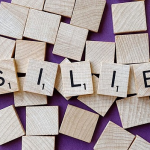P2R2 – A Formula for a Successful SEL Program
Rick Hunt – Principal of Rockport Elementary, Rockport, IN
Have you ever longed for a bag of magic dust that you could sprinkle over the heads of your students and make all the behavior issues, confidence issues, and other classroom concerns just disappear? P2R2 IS NOT a recipe for the magic dust… sorry. However, if you believe success is a process and not a destination, then P2R2 IS a formula for the type of positive learning environment and social emotional learning program that will allow your students to succeed. P2R2 stands for being positive, proactive, responsive, and restorative. P2R2 is a program we use at Rockport Elementary, and is something of a mashup of a number of programs and best practices; Positive Behavior Supports, Responsive Classroom, and Restorative Practices being key elements. From those programs, we have drawn the best practices and built them into the ethos of our school.
P1 – Being Positive
There is a website that is called The Death Clock. The opening page touts, “the internet’s friendly reminder that life is slipping away…second by second.” Warm and fuzzy sounding, right? On the site, you plug in your birth date, sex, how positive you see the world, your BMI, and smoking status. Playing on the site and changing up a few of the answers to your positivity and your BMI and such can have a dramatic effect on what the clock says you have left in your timeline. In fact, the thing that seems to add the most years to your life is your outlook. If you are a pessimist, you are going to live a very short and angry life while the optimist grows old!
This isn’t junk science on the internet. In fact, studies at the Mayo Clinic found that a positive outlook and positive emotions can increase life expectancy by 10 years! That is twice as much as the 5.5 years smoking a pack a day takes away from your life. Dramatic benefits come from the fostering of positive emotion.
Our students are much the same. In the classroom and in the school, the power of a positive environment can have broad implications. Specifically: Academic learning happens best within a positive social context. Optimal learning happens when teachers pay lots of attention to teaching children positive social skills within the context of daily routines and activities. As teachers demonstrate their belief in all their students’ potential for competence and goodness, children will also feel more empathy and tolerance for and interest in each other. (Responsive Classroom, NEFC 2007)
Keeping a positive environment is one key element to the formula of success. In truth, it is probably the key secret in the sauce. It is important to find ways to promote positive interactions, highlight the good behaviors, spotlight growth no matter how small, and keep a growth mindset.
A positive program is developed by:
Promoting a growth mindset: Michael Jordan made basketball look easy like it came naturally and without any effort, when in fact it took him thousands of hours to perfect his game. Students also need to be aware of what it takes to be an expert at anything. In Outliers, Gladwell (2008) calls it the “ten thousand hours of practice” rule. He states that no one can reach excellence without that much deliberate practice. Ericsson’s (Ericsson et al., 1993) studies referred to this same principle as the “ten-year rule.” Since most deliberate practice requires about 1,000 hours per year, they are saying the same thing. It is important that adults tell students the truth about what it takes to reach the top. We need to cultivate a growth mindset. Students need to understand, when we witness extraordinary feats, we are usually witnessing the product of a process measured in years of dedicated practice. Adults need to have conversations about progress (fast or slow) with kids. Help them identify failure as opportunity. Parents and teachers should take every opportunity to point out the intentional, purposeful practice it takes to get better at anything. (Fall Down 7 Times, Stand up 8). The prime point being, YOU CAN GET BETTER! Everything, every misstep, every miss, every step backward is a part of the process of learning to move forward. We all can grow.
Using the right teacher language: The way we speak, our body language, the tone we use, the volume of our voice, and the words we use can all have a huge impact on our students. Skillful teacher language is language that supports students in three broad ways: gaining academic skills and knowledge, developing self-control, and building their sense of community. Across all of these areas, language is a tool that helps teachers articulate a vision, convey faith that students can attain it, give feedback that names students’ strengths, and offer guidance that extends students’ skills. From The Power of Our Words: Teacher Language That Helps Children Learn, 2nd Edition, by Paula Denton. © 2014 Northeast Foundation for Children, Inc.
5 to 1 Ratio: The distribution of positive comments to negative ones must be within a 5 to 1 ratio for relationships to be healthy and whole. That is, there must be five positive comments given for every one negative comment. Amazingly, in 1992 psychologist John Gotman had 15 minute conversations with newly married couples and used the 5 to 1 ratio to predict whether or not these marriages would end up in divorce. Ten years later his predictions were 94% accurate. This is a simple but powerful strategy that must be employed. You will have to correct, but take time to point out the positives at a much higher frequency.
P2 – Proactive
Frequently, the question is asked, “Why should I have to teach kids to be good? They already know what they are supposed to do. Why can I not just expect good behavior? It’s common sense!” In the words of Dr. Phil, “How is that working for you?”
We know many of our students do not come pre-taught with positive social norms and behaviors because of their home environments or external influences; not because they are obstinate or defiant. They simply don’t know better or they do but it isn’t yet a habit. Common sense isn’t common until it is explicitly stated, modeled, and reinforced. For school appropriate behavior to become common sense it must be explicitly taught in a proactive manner. We need to teach our kiddos what we expect, and underpin those lessons by providing consistent feedback and reinforcement.
A proactive school program is developed by:
Create School-wide Expectations: Having a few simple, positively stated expectations facilitates the teaching of behavioral expectations across school settings. For example, at Rockport we use Be Safe, Be Respectful, and Be Responsible. These simple words can be used in every area of the area of the building. This helps because students learn our expectations through consistent language. By focusing on the core expectations, it is easier for students to remember expectations in each area of the school. Expectations are explicitly taught for each area of the school, and a considerable amount of time goes into that instruction.
Celebrate Those that Meet Expectations: Shining a spotlight on students who are meeting expectations is important. Research has shown that recognizing students for following the expectations is even more important than catching them breaking the expectations. By stating expectations positively, the hope is that staff will be more likely to use the expectations to catch students engaging in the appropriate behavior.
Teach the “Soft” Skills: Why do some children succeed while others fail? The story we usually tell about childhood and success is the one about intelligence: success comes to those who score highest on tests, from preschool admissions to SATs. But in the book How Children Succeed, Paul Tough argues that the qualities that matter most have more to do with character: skills like perseverance, curiosity, conscientiousness, optimism, and self-control. Search the web for what companies value you most in identifying candidates to hire. Technical knowledge of the job is often far down the list below those things we call soft skills. To be honest, I rather dislike that term. I’d prefer to call them success skills or critical life skills… It can be argued that a student proficient in the soft skills — but who struggles academically — is better prepared for the next step in life than his or her straight-A peers who lack skills like self-management or grit. Time must be spent in supporting and developing our students’ soft skills toolbox.
These are not skills that will always be able to be taught in a direct lesson. Often they are an intentional product of good modeling, feedback, recognition of students who show these skills, practice and routine. In an effort to reinforce character development, Rockport Elementary integrates specific character traits into our program each month. We believe that these character traits will assist each student in becoming a better person. Each month we will have a specific character trait that we focus on as a school. We celebrate students who show outstanding effort in these areas as well, and we promote the character traits in our community. The traits we focus on are: Be a Rockport Student – Safe, Respectful, and Responsible, Leadership, Integrity, Gratitude, Spirit of Adventure, Purposeful, Kindness, Perseverance, and Synergy.
R1 – Being Responsive
We have to be prepared to be responsive to each student’s individual needs and development. To do so you must develop an organized, data-driven system of interventions, strategies, and supports that impact school-wide and individualized behavior planning. The goal is to positively impact student comportment at three key behavioral tiers: Universal or primary (whole class/school); Secondary (individual child or group of at-risk children); and Tertiary or Intensive (children with complex needs and behaviors that severely impact the child, school and/or community functioning). A successful program is responsive to each individual student’s level of need.
A Responsive School is Developed by: Implementing Data Driven Planning and Corrections at 3 Tiers:
Tier 1: Tier 1 provides high quality instruction and behavioral supports for all students in general education. More than 85% of students will be successful in this tier. Classroom management and individual student behavior is based on expectations, responsibility, and proactive feedback.
Tier 2: If a student fails to learn appropriate behaviors at a rate similar to his/her classmates, a change in the type of instructional or behavioral strategy must occur.
Tier 3: Students may be referred to a behavior team after overall attempts to correct inappropriate behaviors are not working. The behavior team will implement more individualized and intensive behavioral interventions.
For high quality behavioral interventions at each tier and for specific behaviors visit: https://www.pbisworld.com/
Working with Families: One of the most impactful ways to support student behavior is our relationships with them and with the family. If you have a good working relationship with the parents of your student, you have the opportunity to support the student both at school and see that support followed through at home. Like all relationships, the parent/teacher relationship takes effort. Communication, understanding, give and take, and mutual respect are key. Address issues right away. Don’t wait. Be willing to admit your mistakes (we all make them), and keep calm even if things get heated.
R2 – Being Restorative
Have you ever “landed in the doghouse” in a relationship? You said something or did something that upset your spouse or a friend. Like the cute pup in the movie Up said, “I do not like the cone of shame.” Nobody likes living in the doghouse wearing the cone of shame! So how does that get fixed? What process happens that restores that relationship? Maybe a little time needs to occur to allow everyone to cool off. Maybe an apology needs to happen.
Much of the following adapted or taken from “The Restorative Practices Handbook for Teachers, Disciplinarians and Administrators” by Bob Costello, Joshua Wachtel, and Ted Wachtel. Restorative practice is a process that allows a student who has taken a misstep to be fully restored in their relationship with their teacher, their peers, and the classroom and school community. Just like every doghouse moment at home looks different and runs a different course to restoration, there will be varying paths to restoration for our students. There is no specific checklist of must do’s to get back in good graces. Each case will determine the logical steps to restoration.
Balancing the task of holding students accountable for their actions and keeping a positive environment is challenging. The teachers and staff, the student, the offended party, the parents will all look at the situation from a different perspective and their feelings about the outcome may be very different. Often we run up against the ideas of “fairness”, “punishment”, “being too lax”, “being too harsh”…
A Restorative School is Developed by:
Logical Consequences: Consequences are determined by the offense, and must be logically applied to the situation. For example: A student shoves another student on the playground. He is sent to the office with a referral, and he is given an opportunity to discuss the situation and a consequence is given. A common consequence might be to give a recess time out the next day. For the offending student who came to the office and was willing to take responsibility for their action, understood their behavior had hurt someone else, and was willing to give a sincere apology, this consequence may seem logical. Depending on the circumstances, to another student this punishment may cause resentment and seem punitive. To another it may seem permissive. It will ultimately depend on the situation, an understanding of the circumstances, the student’s willingness to accept responsibility, how they perceive their involvement in the situation, and what opportunity the consequence will provide for the student to be restored back into the group.
Overall, the consequence is not the goal. Simply applying a consequence is not immediately restorative. The nature of process is what makes it restorative or not. Restorative practices have the goal of ensuring limits and discipline are connected with a balance of encouragement and nurturing. They try to foster understanding of the impact of the behavior:
- Seek to repair the harm that was done to people and relationships
- Attend to the need of the victims and others in the school
- Avoid imposing on students intentional pain, embarrassment, and discomfort Actively involve others as much as possible
Consequences will need to be applied to situations, and they may involve time away or restitution. The goal is that the process around the consequence helps the offending student understand why the consequence is necessary and productive for themselves and others. This can take time, and is certainly not an easy path. Ultimately however, when logical consequences are applied through a process and relationships are restored, students will feel more connected to the school community. They will be less likely to make the same mistake again.
Repair the harm: Students also must repair the harm they have caused. Reparation of harm generally falls into two categories: concrete reparation and symbolic reparation, or a combination of the two. Concrete reparation is repairing or replacing something tangible: returning a stolen calculator or repainting a graffitied wall. Symbolic reparation is saying or doing something that acknowledges feelings, demonstrates remorse or restores peace and harmony. Reparation should stem from the desire to make things right.
Being positive, proactive, responsive, and restorative are the secrets in the sauce. How they look in each building may be very different. But each of these key elements must be in place for a social and emotional learning program to be effective. Certainly this article was not an anthology of every great social emotional learning program, student management program or student discipline model. I do not believe there is a one-size-fits all, magic bullet that will make all your student management concerns or social and emotional issues disappear (if you find such a thing, bottle it and sell it!). What I hope you found is a framework of ideas and practices that are proven to support the culture and environment that is the best for our students’ emotional and academic growth and development.
You can also listen to the IASP LeaderCast with Rick Hunt by clicking here.




